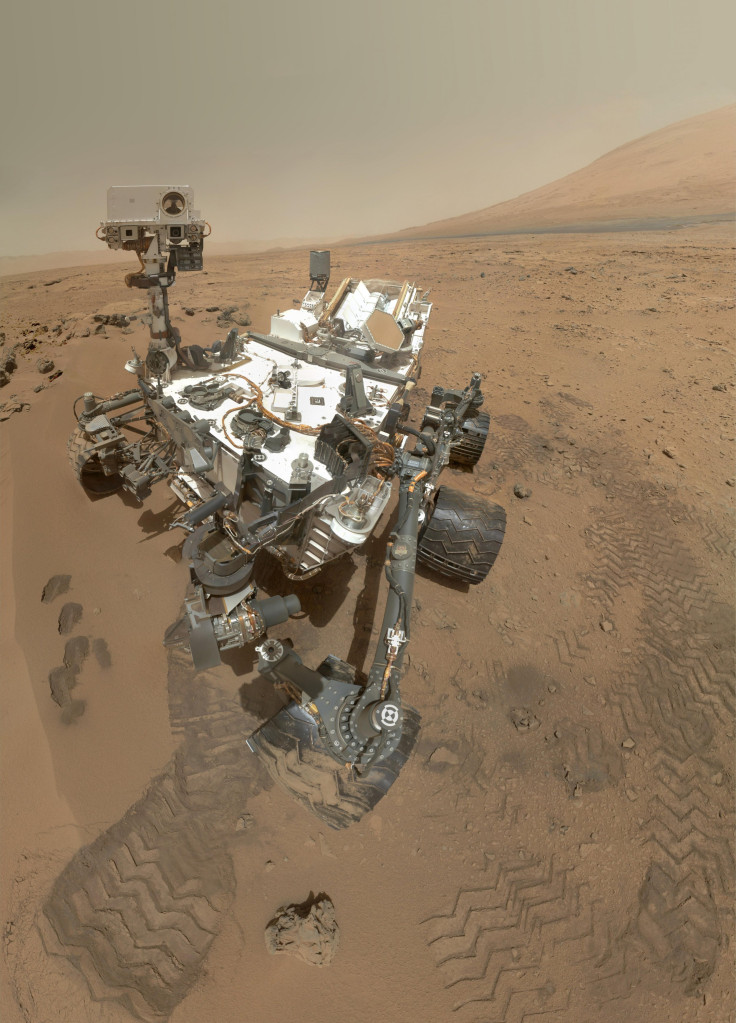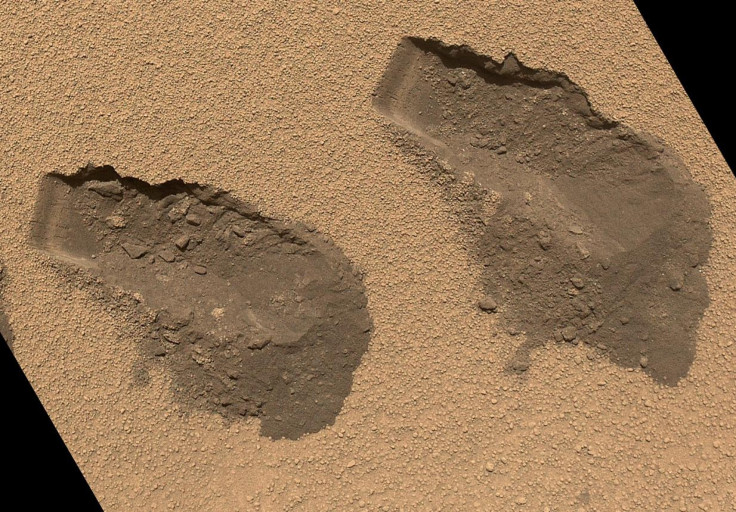Curiosity Discovers Plenty Of Evidence Of Water On Mars And An Unusual Rock
The one year spent by NASA’s Mars rover Curiosity on the Red Planet has been a boon to science. Most recently, Curiosity discovered more evidence of water on the planet, as well as a mugearite, a volcanic rock totally different from other rocks previously found on Mars.

The latest round of research was collected in a special edition of the journal Science. The biggest finding was evidence of water in soil samples collected by Curiosity. According to researchers, between 1.5 and 3 percent of the soil found on Mars contains water. On its way to Mount Sharp, Curiosity discovered traces of sandstone deposited by flowing water in ancient times.
Researchers at the Los Alamos National Laboratory analyzed soil samples using several of Curiosity’s instruments. Analysis of these soil samples revealed two “components” on the surface of the planet, a fine-grained dust and coarser particles. According to the researchers, these coarser particles are possibly the residue of rocks that eroded over time.

The analysis by the Los Alamos National Laboratory researchers concluded the presence of water was consistent across the surface of Mars. In theory, the small amount of water found on Mars could be accessed by future astronauts through the simple heating up of the soil. The analysis also indicated Mars had a volcanic past that was instrumental in shaping the surface of the planet.
In addition to finding more evidence of water, Curiosity discovered a rather Earthlike rock. As reported by Science, the rock -- named “Jake_M” after Jake Matijevic, a deceased Jet Propulsion Laboratory engineer -- is a mugearite that can be found on islands in Earth’s oceans. Martin Fisk, an Oregon State University marine geologist and a member of the Mars Science Laboratory team, said the discovery of the mugearite is evidence of water deep beneath the surface of Mars.

Explaining how mugearites form on Earth, Fisk said in a statement: “It starts with magma deep within the Earth that crystallizes in the presence of 1-2 percent water. The crystals settle out of the magma and what doesn’t crystallize is the mugearite magma, which can eventually make its way to the surface as a volcanic eruption.”
Volcanic rocks crystallize in a specific pattern, and one of the minerals that crystalizes early, feldspar, will crystallize later when water is around, resulting in a rock composition similar to mugearite, Fisk said. Although the discovery of volcanic rocks does not guarantee there is water beneath the surface of Mars -- and more research is required before anyone could substantiate such a claim -- the mugearite find may indicate a nonhomogenized interior of Mars.
Curiosity has yet to arrive at Mount Sharp, the next major area of scientific study. The rover will drill into layers of rock to learn more about the history of Mars. Mount Sharp has more exposed layers of rock than does the area near Curiosity’s landing site, Glenelg.
© Copyright IBTimes 2024. All rights reserved.












